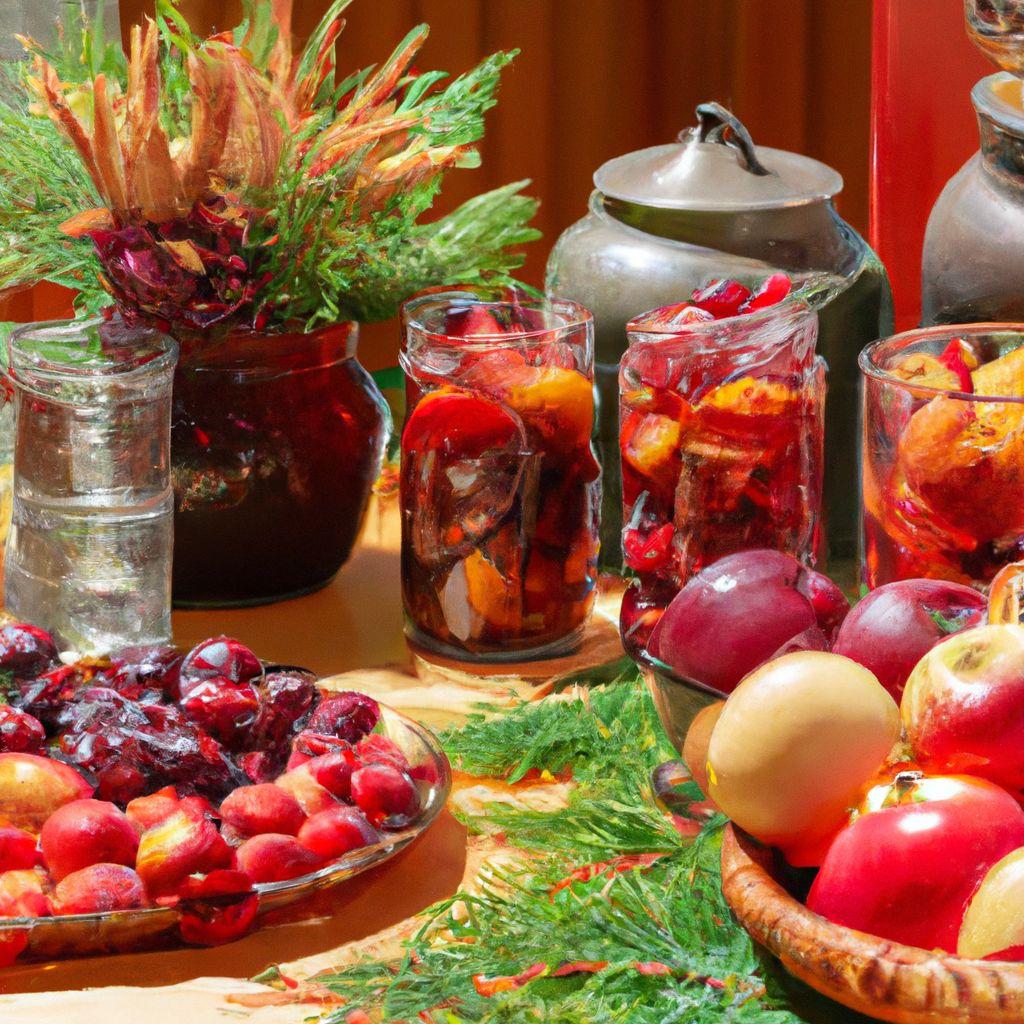Key Takeaways:
- Preserving garden harvests allows you to enjoy your produce all year long and reduce waste.
- Techniques such as canning, freezing, and drying can help you preserve fruits and vegetables.
- Storing root vegetables properly and using methods like pickling and fermentation can extend their shelf life.
Introduction to Seasonal Harvesting and Preserving Tips
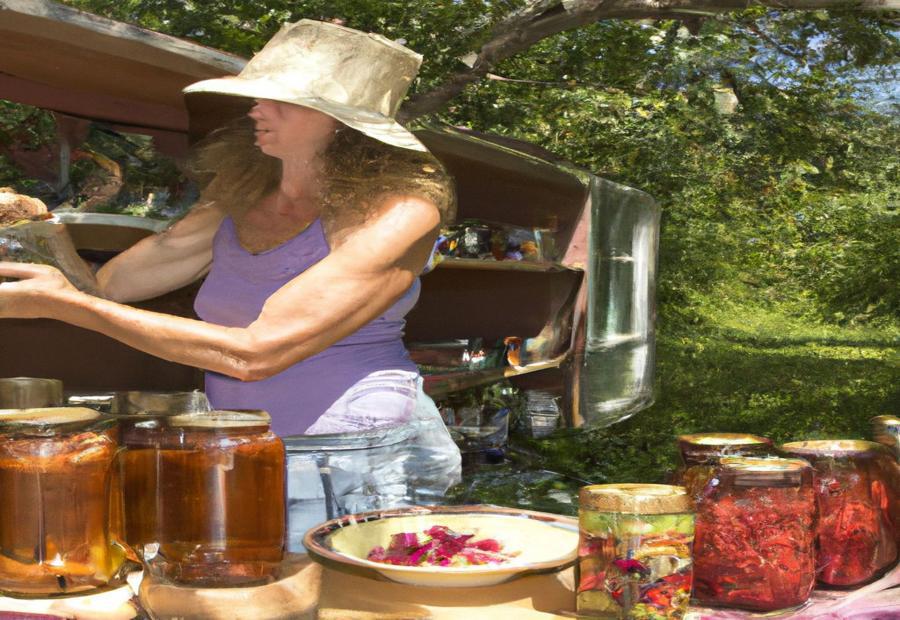
Photo Credits: Gardeninggurus.Org by Douglas Clark
For those who wish to make the most of seasonal produce, harvesting and preserving tips are a must! Planning and knowing when fruits and vegetables are at their peak is key. One should also be aware of the best handling and harvesting methods to optimize quality. Different preservation techniques, such as canning, freezing, and drying, can extend the shelf life and preserve flavors. Plus, one should keep in mind the necessary storage conditions. For instance, the temperature and humidity. Moreover, understanding how different fruits and veggies ripen can help determine the optimal time for harvesting. Lastly, proper cleaning and storage of the produce is critical to avoid spoilage. With these measures, one can enjoy the benefits of seasonal harvest throughout the year!
A fact: Seasonal harvesting and preserving have been practiced for centuries.
The Importance of Preserving Garden Harvests
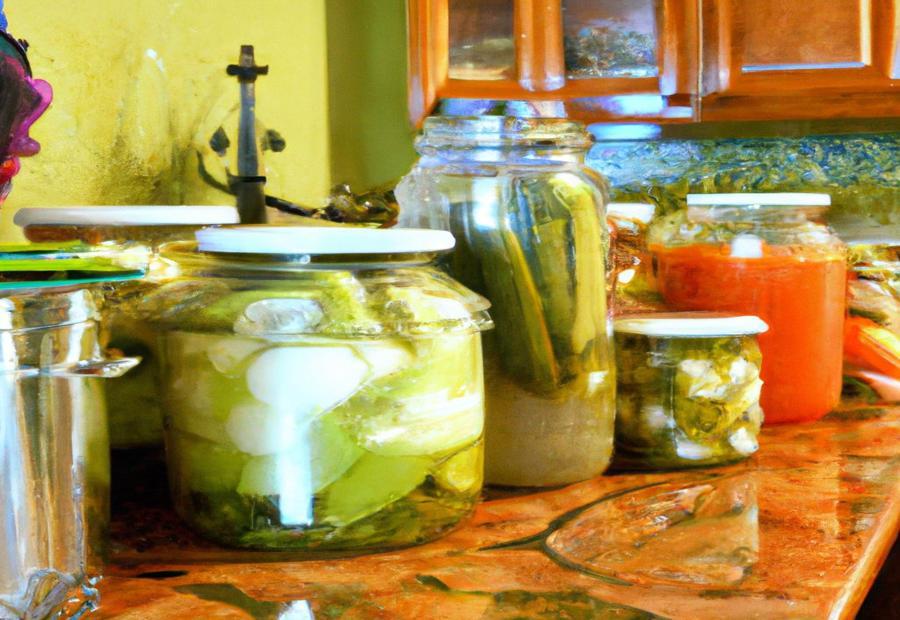
Photo Credits: Gardeninggurus.Org by Randy Martin
Preserving garden harvests is essential for maintaining the freshness and abundance of seasonal produce. In this section, we’ll explore various methods of preservation, including making flavorful jams and jellies from fruits, freezing vegetables for long-term storage, storing root vegetables to extend their shelf life, canning foods for future use, and drying crops to preserve their nutritional value. Discover practical tips and techniques to make the most of your bountiful garden harvests throughout the year.
Preserving Fruits into Jams and Jellies
- Transform fruits into tasty jams and jellies with the art of preserving! Enjoy their burst of flavor long after harvest, with a few simple steps.
- Choose ripe fruits of high-quality to get the best taste and texture.
- Wash them, remove stems, pits, and seeds.
- Cut larger fruits into smaller pieces.
- Simmer the mixture of fruits, sugar, and lemon juice (optional) in a saucepan until soft.
- Pectin may be needed to thicken the jam or jelly.
- Sterilize jars and lids before filling with hot fruit mixture.
- Leave ¼ inch space at the top and seal tightly.
Preserving is a great way to keep fruits fresh and tasty throughout the year. It’s also a great way to experience the sweetness and tanginess of homemade jams and jellies. So make the most of the fruit season and preserve now to savor their deliciousness in every spoonful. And don’t forget to add a bit of love! For veggies, just put them in the freezer and frostbite will do the rest – no need to be cool as a cucumber.
Freezing Vegetables
Preserving veggies by freezing is a popular technique. To do this, you need to:
- Blanch the vegetables in boiling water.
- Then, cool them in ice water.
- Put them in freezer-safe bags or containers.
This process helps to preserve their nutrition and flavor. Peas, corn, beans, broccoli, and carrots are often frozen using this method.
Other preserving techniques include:
- Pantry/larder storage
- Root cellars
- Drying/dehydrating
- Pickling/vinegar preserves
- Fermentation
- Home bottling/canning
Each veggie has its own freezing requirements, so it’s important to follow proper guidelines for best results.
Freezing veggies locks in the nutrients and flavors, allowing you to enjoy garden produce all year long! Don’t let root veggies root for too long – store them right for delicious flavors that stay strong!
Storing Root Vegetables
Root vegetables are an important part of any garden harvest. To keep them fresh for longer, there are several methods you can use.
- Pantry or Larder: Store carrots, beets and potatoes in a cool, dark spot. Make sure the area is well-ventilated and away from direct sunlight.
- Root Cellars: These underground spaces offer cool temperatures, high humidity and protection from light.
- Drying and Dehydrating: Removing moisture helps prevent bacteria growth and extends shelf life.
- Pickling and Vinegar Preserves: Pickling root vegetables in vinegar adds flavor and preserves them.
Remember that different root vegetables have different storage needs. For example, carrots prefer cool and moist conditions, while potatoes prefer dry environments.
Before storing, make sure to remove dirt and foliage. This prevents rotting and the growth of mold. Also, keep the storage area clean and pest-free.
By following these tips, you can enjoy the flavors of your garden all year long. Try different techniques to find the best one for the root vegetables you have harvested.
Keywords: Storing Root Vegetables
Canning Foods
To grasp Canning Foods better, let’s inspect a table. It lists some key points:
| Technique | Description |
|---|---|
| Water Bath Canning | Boiling jars in water for a fixed time. Good for high-acid foods such as fruits, pickles, and tomatoes. |
| Pressure Canning | A method for low-acid foods like vegetables and meats. Temperatures higher than Water Bath Canning. |
| Open Kettle Canning | Filling hot food in jars and sealing them. For jellies, jams, or preserves. |
Other techniques apart from the ones mentioned exist for storing food. But it’s essential to think of the food’s needs and characteristics when choosing a method. In some cases, refrigeration or freezing may be a better option than canning.
By looking into the methods in this article, people can discover the best approaches for storing their harvests throughout the year, preserving their freshness and nutrition.
Drying Crops
Drying crops is a way to store fruits and veggies. It involves removing moisture to preserve them and keep them good for longer. By drying crops, flavors get stronger, and they become compact and easy to keep.
- Clean and remove any bruised or bad parts.
- Cut into thin slices or small pieces.
- Put pieces on racks or trays in one layer.
- Find an area with low humidity and good airflow.
- Air-dry or use a food dehydrator at low temperature.
- Test texture of dried pieces: leathery and no moisture.
Benefits of drying crops:
- Long-term storage without the need for freezing or refrigeration.
- Takes up less space than fresh produce.
- Can be used in cooking: trail mixes, granolas, soups, stews, and baked goods.
- Enhanced flavor profile and concentrated nutrients.
To make crop drying more successful:
- Remove moisture from produce before drying.
- Maintain proper temperature and airflow.
- Use a food dehydrator with adjustable temperature settings.
- Rotate trays or racks occasionally.
- Store dried crops in airtight containers in a cool, dark place.
Techniques for Storing and Preserving Vegetables
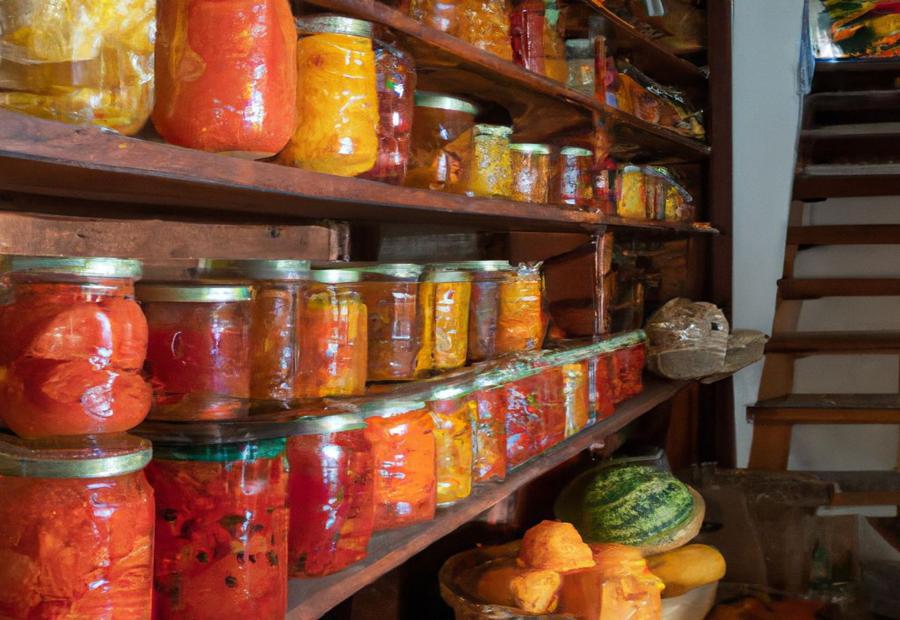
Photo Credits: Gardeninggurus.Org by Bruce Baker
Discover the art of storing and preserving vegetables with a variety of techniques. From pantry storage to root cellars, drying and dehydrating, pickling and vinegar preserves, fermentation, and home bottling or canning, learn how each method can help you extend the life of your seasonal harvest. Whether you’re aiming for long-term storage or exploring new flavors through fermentation, these techniques will ensure your vegetables stay fresh and delicious throughout the year.
Pantry or Larder Storage
To get a better grasp on Pantry or Larder Storage, let’s look at some key details:
- It should be in a cool, dry area away from sunlight.
- Temperature should be between 50-70°F (10-20°C) with a humidity level of 50-60%.
- Shelving should be strong and organized to allow for air flow.
- Store items in breathable containers like mesh bags or baskets.
- Use a rotation system to ensure old veggies are used first and to track inventory.
- Monitor stored produce for any signs of spoilage.
Jessica was a keen gardener who had shelves in her pantry dedicated to Pantry or Larder Storage. One day, she found some potatoes that had started sprouting. Instead of discarding them, she planted them in her garden. Miraculously, they grew into strong plants that produced a great harvest. This taught her the value of proper storage and how you can get unexpected results from supposedly past-their-prime produce. If you have a root cellar, you’re essentially a vegetable cryptkeeper!
Using Root Cellars
Root Cellars: a great way to preserve vegetables! They provide a cool, dark environment that extends shelf life. Here’s a 6-step guide on how to use them:
- Create an Ideal Environment: Cool, dry & well-ventilated. Temperature should be 32-40°F, with 90% humidity.
- Prep the Vegetables: Clean & trim off any damaged areas.
- Choose Appropriate Containers: Baskets or crates lined with straw or sawdust.
- Organize Storage Space: Arrange veggies in an orderly manner, with air circulation between them.
- Monitor Temperature & Humidity: Keep an eye on levels to ensure they remain optimal.
- Rotate & Check for Spoiling: Inspect regularly for signs of spoilage. Remove any rotten produce immediately.
Root cellars offer amazing benefits for vegetable storage compared to other methods. By following these guidelines, you can use them as an efficient & reliable way to store and preserve your homegrown veggies all year round!
Drying and Dehydrating
Drying and dehydrating is a process to remove moisture from food items, allowing them to be stored longer. This technique is used for preserving fruits, veggies, and herbs.
- Step 1: Prepare the food items by washing and slicing into uniform pieces. Remove any seeds, cores, or pits.
- Step 2: Arrange them on drying trays in a single layer. This allows air circulation during the drying process.
- Step 3: Put the trays in a food dehydrator or an oven set at low temp (usually 140°F or 60°C). Heat will slowly remove moisture from the food over several hours or days.
- Step 4: Check regularly for doneness by testing the texture of the dried food items. They should be leathery or crisp without moisture. Once dried, cool before storing in airtight containers.
Drying and dehydrating is an effective method of preserving produce. It extends shelf life, retains flavor and nutrients. This technique reduces waste by using excess harvests or seasonal abundance. Removing water content makes it hard for microorganisms causing spoilage, resulting in longer storage life.
Preserving veggies through pickling and vinegar preserves: turn ordinary vegetables into tangy treats with longer life than a Tinder date.
Pickling and Vinegar Preserves
To show the information about pickling and vinegar preserves, I will create a table with the following columns: Vegetable Type, Pickling Solution (vinegar, salt, spices), and Recommended Storage Time.
Vegetable Type | Pickling Solution | Recommended Storage Time
———— | ————- | ————-
Cucumbers | Vinegar, salt, water, herbs or spices | Several months
Carrots | Vinegar, salt, water, herbs or spices | Several months
Onions | Vinegar, salt, water, herbs or spices | Several months
Cauliflower | Vinegar, salt, water, herbs or spices | Several months
Green beans | Vinegar, salt, water, herbs or spices | Several months
Pickling and vinegar preserves are a way to keep foods. You put them in vinegar, salt, and herbs and spices. They taste better, and last longer. In the reference data, it mentions pickling and vinegar preserves as one of the techniques for storing vegetables.
Cucumbers are traditional, but also carrots, onions, cauliflower, and green beans. Each veggie may have different pickling solution ingredients, but usually it’s vinegar, salt, water, and herbs or spices. Put pickled vegetables in an air-tight jar or container in a cool place and they’ll last several months.
By including this table in an article about harvesting and preserving tips, readers can learn about alternative methods for preserving their garden produce. They can enjoy homegrown flavors all year and add variety to meals.
Fermentation
This table shows different fermentation techniques:
| Fermentation Techniques |
|---|
| Pickling and Vinegar Preserves |
| Fermentation |
| Home Bottling or Canning |
Fermentation can be used to make tasty pickles, sauerkraut, kimchi, etc. These foods not only give flavor, but also help with digestion.
Home bottling or canning involves fermentation too. This way, fruits, veggies, and drinks like kombucha and mead can be stored for longer.
To sum up, fermentation is a great way to preserve food. It can make food last longer and taste better. Plus, it lets us make creative dishes from seasonal harvests!
Home Bottling or Canning
Home bottling or canning is a way to store and preserve food for a long time. It involves sealing jars and bottles of food, making airtight conditions to stop spoilage and keep the nutrition of the contents. Folks who want to enjoy garden produce year-round use this method.
The table below has methods and tips for home bottling or canning:
| Method | Description |
|---|---|
| Water bath | High-acid fruits, pickles, jams, jellies. Boil jars in water. |
| Pressure can | Low-acid foods like veggies, meat, soups. Pressure sterilizes jars. |
| Hot packing | Heat food before bottling. Kills bacteria, increases shelf life. |
| Cold packing | Raw food is packed without pre-cooking. Heat kills bacteria. |
Home bottling or canning has advantages. Long-term storage and homemade gifts are benefits. Plus, people can control what goes into their food. They can enjoy garden flavors all year.
Take Mary, for example. She had too many tomatoes last summer. By home bottling, she preserved her tomatoes with her own seasonings and herbs. Now she can enjoy homemade tomato sauce, even in winter when fresh tomatoes are hard to find.
Best Practices for Storing and Preserving Fruits
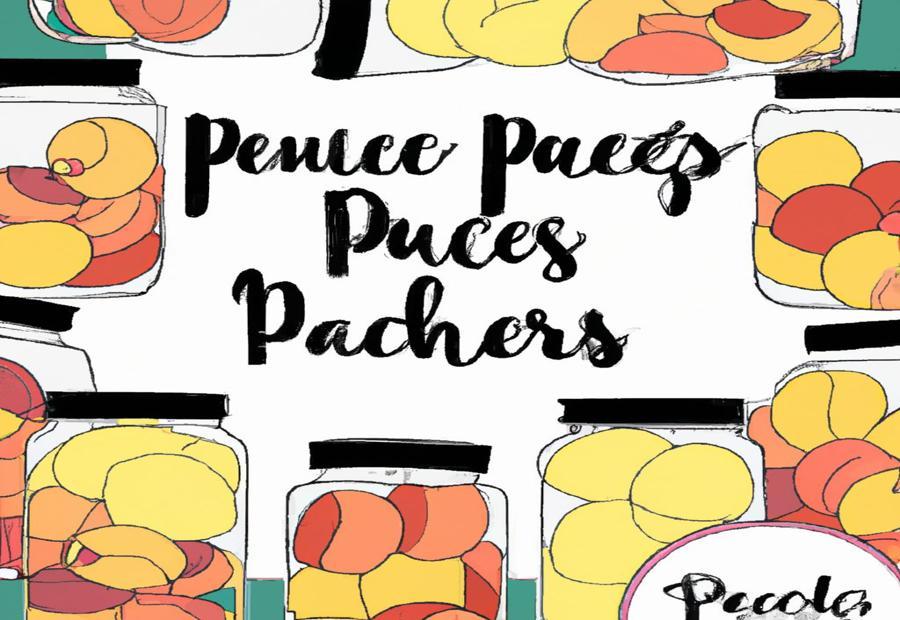
Photo Credits: Gardeninggurus.Org by Adam Hall
Discover the best practices for storing and preserving fruits to make the most out of your seasonal harvest. From the advantages of refrigeration versus room temperature storage to freezing techniques and creating herb cubes, we’ll explore various methods that help extend the shelf life of your favorite fruits. Additionally, we’ll delve into canning and pickling options as well as share some handy tips for storing onions and potatoes. Get ready to savor the flavors of your bountiful harvest all year round!
Refrigeration vs. Room Temperature Storage
When it comes to storing your fruits and veggies, the choice between cold and room temperature storage can have a big impact on their shelf life. Cold temps in the fridge can help slow down the ripening process of certain fruits and veg. Berries, leafy greens and delicate produce do well in the cold. But some don’t. Tomatoes, avocados, citrus fruits, onions and potatoes should stay out of the fridge. They benefit from air circulation and keep their flavor and texture better at room temp.
It’s important to find the right balance. Different fruits and veggies have different needs. Learn about proper storage techniques and you’ll ensure maximum freshness and get a longer shelf life. Don’t miss out on the opportunity to enjoy your garden’s bounty all year round. Take the time to learn how to store each item properly. A bit of effort upfront can lead to more flavorful experiences overall. So don’t let your fruits and vegetables think they’re in a spa, they need some rough handling and tough love to stay fresh!
Proper Handling and Care
Handle your fruits and veggies with care to avoid bruising and damage. No dropping or tossing! Different types of produce need different storage methods.
- Leafy greens: airtight containers/bags in the fridge.
- Roots: cool, dark place like a cellar/pantry.
Check for spoilage and remove any spoiled pieces. Temperature is key – berries/delicates: 32-40°F (0-4°C). Heartier veggies: 50-55°F (10-13°C). This will help keep your harvests fresh and flavorful for longer. You’ll save money and minimize food waste. And don’t forget to freeze herbs to enjoy summer all year long!
Freezing and Creating Herb Cubes
Freeze and make herb cubes! Here’s a 4-step guide:
- Wash the herbs to remove dirt.
- Cut off tough stems and damaged leaves.
- Chop finely or leave in sprigs.
- Place in ice cube trays and fill with water. Freeze for a few hours.
Label the cubes with type of herb and date. This tracks freshness and prevents wastage.
Freezing herb cubes is great! You can cook with fresh herbs throughout the year. Also, it helps reduce food waste by preserving excess herbs.
This technique is popular with home cooks. It retains flavor and aroma. Pickling perfect fruit? Embrace the brine and dive into a jar of tangy goodness!
Canning and Pickling Fruits
Canning and pickling fruits is a great way to preserve your garden harvests. It helps to maintain flavor and nutrition for long-term storage. There are several methods like refrigeration, freezing, canning, and pickling that can be used.
Here’s a quick overview of the different techniques to can and pickle fruits:
| Method | Description |
|---|---|
| Refrigeration | Store fruits in a cold environment to extend their lifespan |
| Freezing | Use low temperatures to freeze fruits for later use |
| Canning | Seal fruits in jars with syrup or other liquid |
| Pickling | Preserve fruits by immersing them in a vinegar solution |
These methods let you enjoy favorite seasonal fruits all year round. Plus, there are special storage tips for onions and potatoes to ensure long-term preservation. Handle and care for different types of produce properly to make sure your harvested crops are appropriately preserved.
Keep onions and potatoes in a dark, cool place – just like that mysterious neighbor you never talk to!
Onions and Potatoes Storage Tips
Store onions and potatoes properly to ensure freshness and prevent spoilage. Here are some tips to remember:
- Keep onions in a cool, dry place with good ventilation. Do not store near other produce, as they release gases that lead to spoilage.
- Don’t expose onions to moisture or direct sunlight, as this causes sprouting and decay.
- Do not wash onions before storage; just wipe off dirt or debris gently.
- Potatoes should be stored in a dark and cool area with temps between 45-50°F (7-10°C).
- Avoid storing potatoes near onions or fruits, as ethylene gas from these items causes sprouting.
- Check onions and potatoes regularly for any signs of rotting or sprouting. Remove any spoiled pieces.
Learn local agricultural extension services’ instructions and reliable resources for specific onions and potatoes. Proper storage prolongs freshness, preserves quality, flavor, and nutrition. Don’t miss out on homegrown flavors by overlooking storage methods. Check stored produce regularly to make sure they remain in optimal condition. Follow these tips to extend the shelf life of your produce and reduce wastage. Act now to savor flavorful onions and potatoes for months to come!
Tips for Cool Season Harvesting and Storage
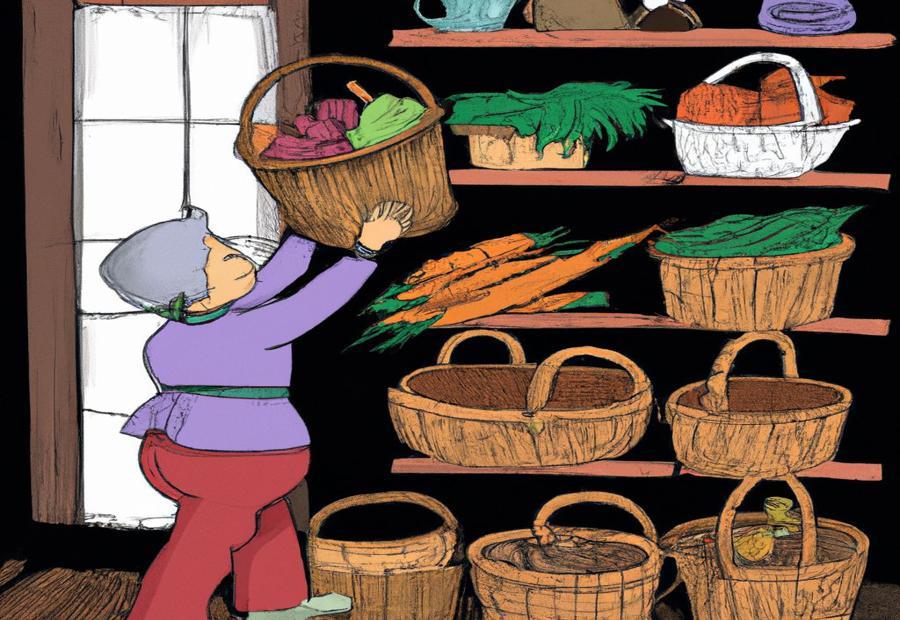
Photo Credits: Gardeninggurus.Org by Gregory Williams
When it comes to cool season harvesting and storage, we’ve got you covered. Learn the best techniques for harvesting fall crops, discover apple storage secrets, find out how to store beets, carrots, and greens effectively, and explore the art of preserving leeks and winter squash. With these tips, you’ll be equipped to make the most of your seasonal harvest and keep your produce fresh for longer.
Harvesting Fall Crops
As the fall nears, it’s good to know the proper techniques for harvesting fall crops. Harvesting efficiently ensures peak freshness and flavor and maximizes storage life. Here’s a 6-step guide!
- Assess Maturity: Check if crops are ready by looking for color change or firmness.
- Use Sharp Tools: Pruning shears, scissors, or a sharp knife can be used.
- Harvest in Good Weather: Dry conditions minimize risk of disease and spoilage.
- Gentle Handling: Avoid dropping or tossing them into containers.
- Prompt Cooling: Quick cooling maintains freshness and nutritional value.
- Proper Storage: Refrigerate or store in cool pantry/cellar.
Each crop has its own harvest time and storage needs. Understanding these details helps make informed decisions. By following these guidelines, you can enjoy the bounties of your fall harvest for longer and minimize waste. An apple a day keeps the doctor away, but wrong storage leads to mold and decay!
Apple Storage Techniques
Preserve apples for long-term use with these techniques! Keep apples fresh by storing them in a cool and dark place, between 30-35°F (-1 to 2°C) and 90% humidity.
Refrigerate in perforated plastic bags or wrap each in tissue paper. Cellar in root cellars or cool basements, but monitor ventilation and mold.
Freeze in airtight containers or plastic bags post-peeling, coring and slicing. Dehydrate thinly-sliced apples until crisp and store airtight.
Can syrup or juice for fresh apple taste during non-harvest seasons. Follow these tips and you’ll have delicious apples all year round!
Lastly, don’t forget proper apple storage – it’s key to prevent spoilage and maintain quality. Store your beets, carrots, and greens like your life depends on it.
Storing Beets, Carrots, and Greens
To properly store beets, carrots, and greens, try these five simple steps:
- Gently remove any dirt or debris. Don’t wash them yet, this will increase moisture.
- Trim off the tops of beets and carrots. This will help prevent moisture loss.
- Store in a cool, dark place with good airflow. This could be a root cellar or a refrigerator crisper drawer.
- If storing greens, wrap them in paper towels and put in a resealable bag before refrigeration.
- Check regularly for spoiled veggies to keep the quality of the produce.
Following these steps helps keep the beets, carrots, and greens fresh and flavorful. Different greens need their own storage conditions. For example, wrap leafy greens like kale and Swiss chard in plastic before refrigerating. Also, keeping beets with their tops on can help them stay fresher longer since they draw nutrients from the leaves.
By knowing how to store beets, carrots, and greens, you can enjoy the flavors and nutrition for a long time!
Preserving Leeks and Winter Squash
Preserve leeks and winter squash in 4 steps!
- Canning: Cook ’em, pack ’em in sterilized jars, seal with lids – done!
- Freezing: Blanch first to keep colour & texture, then freeze in airtight containers or freezer bags.
- Drying: Remove moisture with a food dehydrator, or hang in a well-ventilated area until dried.
- Pickling: Soak in vinegar, water, salt & spices for flavorful pickles all year long.
Remember to store in cool temperatures away from direct sunlight, and always clean before preserving. Reduce food waste and enjoy flavors all year round!
The Benefits of Home Food Preservation
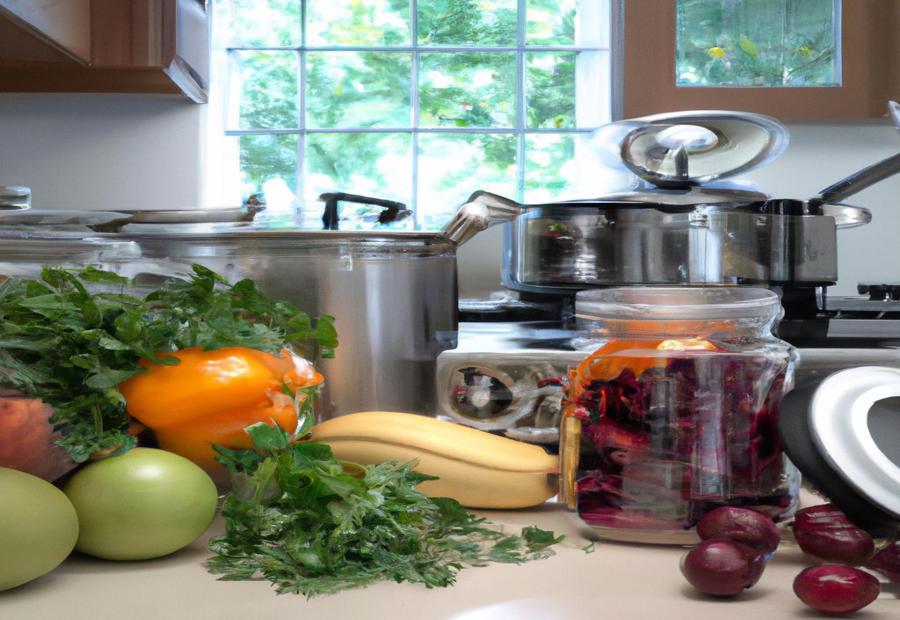
Photo Credits: Gardeninggurus.Org by Vincent Jackson
Preserving your own food at home provides a range of benefits. From reducing your environmental impact and saving money to enjoying convenient homemade gifts, learning new skills, and ensuring food safety, home food preservation has something for everyone. Let’s explore the advantages of embracing the practice and discover how it can foster a deeper connection to our food and environment.
Environmental and Economic Benefits
Seasonal harvesting and preserving offer many advantages. These include:
- Less food waste – we can store excess produce from the garden and use it later.
- Smaller carbon footprint – no need for transportation or processing, reducing emissions.
- Savings on groceries – store and preserve fruits and veggies from the garden to save money.
- Sustainable living – supports local agriculture, reduces reliance on commercial food systems, and encourages self-sufficiency.
- Preserving biodiversity – various crop preservation helps protect different plant species.
- Reduced packaging waste – no need for store-bought packaging.
Besides these benefits, home food preservation lets us enjoy garden produce all year. It also gives us a chance to connect with nature, by harvesting, storing, and preserving our own produce. With proper storage techniques, we can ensure that our preserved foods are safe.
Overall, seasonal harvesting and preserving have positive environmental impacts and cost savings. It’s a great way to make use of garden harvests, while relishing the flavor of fresh produce out of season.
Give your family the joy of homemade food with preserved harvests from the garden!
Convenience and Homemade Gifts
Preserving your garden harvests offers year-round convenience and the chance to make thoughtful gifts. Jams and jellies, canned goods, and dried fruit arrangements are all delightfully unique presents.
On top of the convenience, these preserved foods have sentimental value that can’t be found in stores. So take advantage of this opportunity! Enjoy the freshness of your harvest while also sharing its flavor and memories with others.
Learning New Skills and Food Connection
Gaining skills and bonding with food are key elements of the home food preservation journey. People can develop great abilities which can be put to use again and again. Plus, this relationship with food enables a better appreciation of the components used in homemade preserves and the delight of making something tasty and nutritious.
Making jams and jellies, freezing veg, storing root vegetables, canning, drying crops – all these techniques involve learning new skills and understanding the science of preserving food. With practical experience, people can learn about different preservation methods and work out which are best for them.
Not only is there knowledge to be gained, but there are also strong links between food preservation and sustainability. By keeping garden harvests, people can reduce food waste and minimize their environmental affect. This is in line with a growing wish to live more sustainably and cut down on store-bought packaged goods.
By taking the time to learn about home food preservation methods and connecting with the process of preserving fresh produce, people can add to their culinary skillset and savour the flavours of garden produce all year round. Knowing where your food comes from and being able to share homemade preserves with family and friends adds an extra layer of pleasure to the preservation process. Don’t miss out on the chance to gain skills, bond with your food, and enjoy seasonal fruits and vegetables throughout the year.
Addressing Food Safety Concerns
Food safety is an important part of preserving and storing garden produce. Taking precautions helps keep food safe for longer. Canning, refrigeration, and proper handling are a few techniques to address these concerns.
Preserving food includes canning, freezing, drying, and pickling. These methods help extend shelf life and keep food safe for consumption. Canning creates a vacuum seal to prevent bacteria growth. Freezing slows down enzymatic activity. Drying removes moisture to keep out microorganisms. Pickling with vinegar is a natural preservative.
At home, it’s important to follow food safety guidelines to prevent spoilage and maintain quality. Cleanliness, safe containers, and temperatures are key. It’s also important to stay up-to-date with current recommendations and guidelines. Government websites, university programs, and books provide good info on best practices. Taking necessary precautions will let individuals safely enjoy their garden produce without health risks.
Resources for Further Information
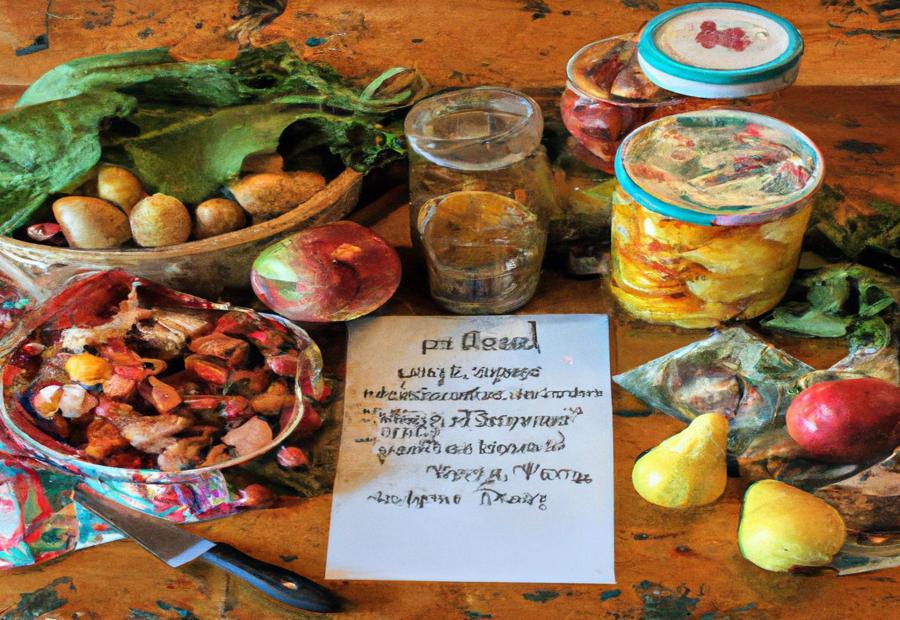
Photo Credits: Gardeninggurus.Org by Jose Thompson
Wanna increase your knowledge and expertise in seasonal harvesting and preserving? Here are some valuable resources to check out:
- Comprehensive Guides: Step-by-step guides on various ways of harvesting and preserving, such as drying, canning, and pickling.
- Online Communities: Connect with active online communities where gardening fans and experienced harvesters share their tips and tricks.
- Local Workshops: Participate in workshops hosted by local agricultural organizations or community centers to learn practical advice from experts.
- Books and Publications: Read a range of books and publications about this subject, giving you depth of knowledge and motivation.
- Podcasts and Webinars: Listen to podcasts and webinars discussing seasonal harvesting and preservation techniques, presented by industry pros.
- Agrarian Courses: Take specialized courses focusing on various topics related to seasonal harvesting and preserving.
Plus, don’t forget to search other trustworthy sources like local extension offices, cooperative extension services, and research papers for more insight and evidence-based data to improve your knowledge and abilities in harvesting and preserving.
Now is the time to dive into these resources, gain valuable insights, and master your seasonal harvesting and preserving techniques. Don’t miss out on the chance to up your skills and see great results in your harvests.
Explore these helpful resources and take your seasonal harvesting and preserving skills to the next level. Enjoy the pleasure of creating scrumptious treats and preserving the abundance of each season. Start your journey right away and discover endless possibilities in the world of seasonal harvesting and preserving.
Conclusion: Enjoying the Flavors of Garden Produce All Year Long
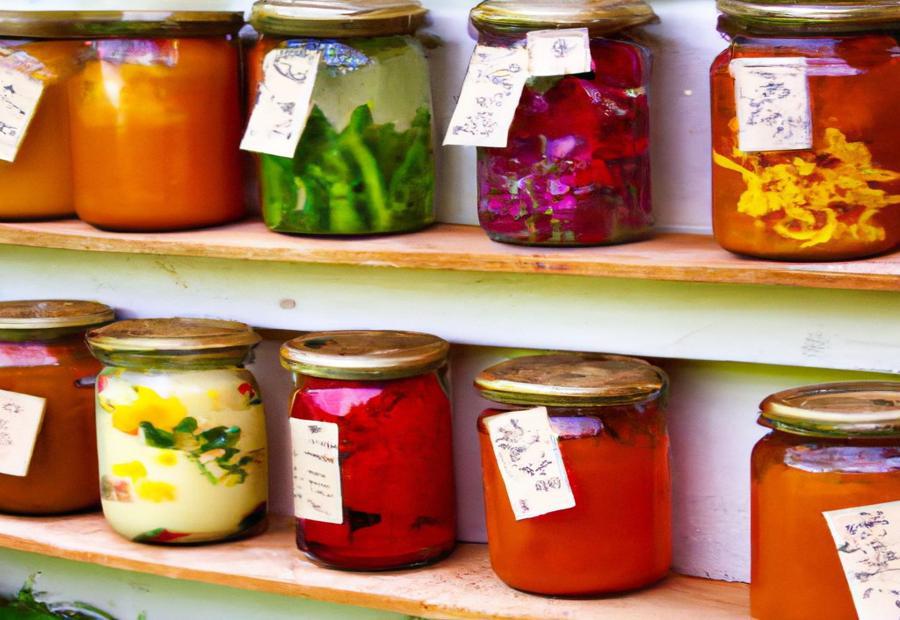
Photo Credits: Gardeninggurus.Org by Ronald Flores
Preserving the flavors of garden produce all year? Delightful! Enjoy the garden’s bounties throughout the seasons. Implement seasonal harvesting and preserving tips to savor the taste of fresh produce even when it’s not in season.
Canning is one method. Pack fresh fruits and vegetables into jars, seal them, and maintain their quality.
Freezing helps preserve flavors of certain fruits and vegetables. Freeze at peak freshness to maintain taste and nutritional value. Great for berries, peas, and leafy greens!
Drying also works. Remove moisture from fruits, vegetables, and herbs to prolong shelf life and retain flavors. Great for culinary creations and snacks!
By implementing these techniques, you can enjoy the flavors of your garden produce all year. Canning, freezing, or drying – you have options based on preferences and produce available.
Preserving the flavors of your garden produce is a wonderful way to extend the enjoyment beyond its seasonality. With the right techniques, you can savor the flavors all year. So why not take advantage of these tips and relish the taste of your homegrown produce even when it’s not in season?
Some Facts About Seasonal Harvesting And Preserving Tips:
- ✅ Preserving garden harvests can be done through methods like canning, freezing, drying, and pickling, which help extend the lifespan of the produce. (Source: Team Research)
- ✅ Root vegetables like carrots, potatoes, and beets should be stored in a cool, dry environment like a basement or cellar to prevent them from becoming rubbery. (Source: Team Research)
- ✅ Freezing is an easy and effective method of preserving fruits and vegetables, and they should be packed into press and seal bags to prevent freezer burn. (Source: Team Research)
- ✅ Canning is a more time-consuming method of preservation but can keep food fresh for longer periods. Mrs. Wages products recommend water bath canning. (Source: Team Research)
- ✅ It is important to choose unblemished produce and regularly check for any diseased items when storing crops. Storing in a dry, well-ventilated place will prevent rotting. (Source: Team Research)
FAQs about Seasonal Harvesting And Preserving Tips
1. What are some easier techniques for preserving seasonal harvests?
Easier techniques for preserving seasonal harvests include freezing, drying, and storing in a cellar or root cellar. These methods require minimal equipment and can help extend the shelf life of fruits and vegetables.
2. How can I preserve fresh fruits and vegetables without electricity?
To preserve fresh fruits and vegetables without electricity, you can use traditional food preservation methods such as drying, pickling, and fermentation. These methods have been used for thousands of years and do not require refrigeration or electricity.
3. What is the process of pressure bottling for preserving food?
Pressure bottling is a method of preserving food that involves packing fruits or vegetables into jars and then processing them under pressure in a pressure canner. This method ensures the proper sterilization of the food and creates a vacuum seal to keep it fresh for an extended period.
4. How can I make compound butters using homegrown herbs?
To make compound butters using homegrown herbs, start by mixing softened butter with finely chopped herbs. Add other flavorings like garlic or lemon zest if desired. Once mixed, shape the butter into a log or put it into a container and refrigerate or freeze it for later use.
5. How can I freeze my vegetables to preserve them?
To freeze your vegetables, wash them thoroughly and blanch them in boiling water for a short time. Then, cool them quickly in ice-cold water and pack them into airtight freezer bags. Label the bags with the contents and date before placing them in the freezer.
6. How can I ensure the safety of home food preservation?
To ensure the safety of home food preservation, it is crucial to follow tried and tested recipes from reputable sources such as the National Center for Home Food Preservation and State and County Extension services. These resources provide guidelines for safe preservation techniques and help reduce the risk of foodborne illness.


